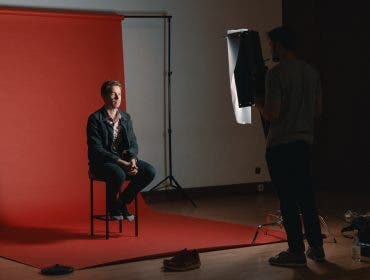Around the world, aspiring filmmakers gather in theaters, at film festivals, in indie cinemas, and for Hollywood screenings to appreciate the artful storytelling and immersive worlds of cinematic filmmaking. Nothing inspires future generations of filmmakers and cinematographers like the magic of the movies.
The concept of film production can feel overwhelming, especially in light of the excellent production quality of today’s feature films. As a result, the dream of filmmaking can seem like a far-off pipe dream.
Fortunately, the filmmaking process is regularly demystified by behind-the-scenes featurettes, interviews with successful filmmakers, and classes at film schools geared toward aspiring filmmakers. If you want to make a film but you have no idea how to get started on your cinematography dreams, here’s a quick overview of what it can take to learn filmmaking.
Develop an Idea

The first step is a spark of inspiration. In fact, most films begin with a single idea or question. Many filmmakers have a running list of ideas that they’ve collected over the years. Some ideas make it through the filmmaking process all the way to Hollywood red carpet premieres, while others never go beyond the initial phases of script writing.
The very first step is to come up with an idea. As you go about your life, read books, watch movies, and experience the world around you, take notes on interesting questions or situations that pop into your head. That idea you’re looking for may be right in front of you!
Assemble a Script

Screenwriting takes some practice, but it’s not all that different from writing a short story or any other format of creative writing. You’ll need an idea, characters to influence and carry the story along, an environment that challenges your characters, and a source of conflict or action that will drive the plot.
Screenwriting is an ongoing process that will take time to perfect. Script writing often involves numerous edits and drafts as you adapt and clarify the central story and action. Before you get into detailed stage directions or writing dialogue, it helps to create an outline for the action of the film. Who are the characters and what journeys do they experience?
Create Storyboards

Storyboards are like thumbnail sketches of what viewers will see on screen. They allow you to convey your vision to other members of the production team, from producers who will help you fundraise, to camera operators and crew members.
During the storyboarding process, you can plan your camera angles and the types of shots you’ll need, while you define the look and feel of your film. If you’re not sure where to start, look online for storyboarding templates and examples to study.
Assemble Your Creative Team

All films require a creative team, from big-budget Hollywood features to more subdued short films. Don’t get bogged down by thinking you need to do everything yourself. If you’re inexperienced in a certain area, recruit crew members who can fill in the gaps in your skill sets.
It’s nice to recruit a team that you know well or have worked with before, but it’s important to remember that the goal is to make the best possible film. Be realistic about the capabilities of the people you recruit — in addition to your budget!
Film Your Vision

Just when it feels like you’ll never get out of the pre-production stages, filming will begin! Plan your filming schedule carefully so you have plenty of time to achieve the shots you need without overworking your film crew or performers.
A finalized script is always ideal during filming. Nothing frustrates a production team like constant rewrites or script revisions once production starts. As you film, make sure you’re getting what you want out of each scene before moving on to the next. For example, it’s totally normal for each scene to require hours or even days to shoot.
Bring it all Together in Post-Production

Assembling a rough cut comes first. Refer back to your script and storyboards to assemble the best takes into a draft version of your movie.
This part of the process takes a very long time and usually benefits from multiple creative inputs. Work with your cinematography team and other trusted crew members to review the rough cut and make edits.
Once you’re happy with your rough cut, you can move on to creating final drafts. Add music, visual effects, transitions, and more to fully realize your vision!
Want to learn more about the art of filmmaking? See this list of the best filmmaking podcasts, and these lists of the best film schools and online film classes.






